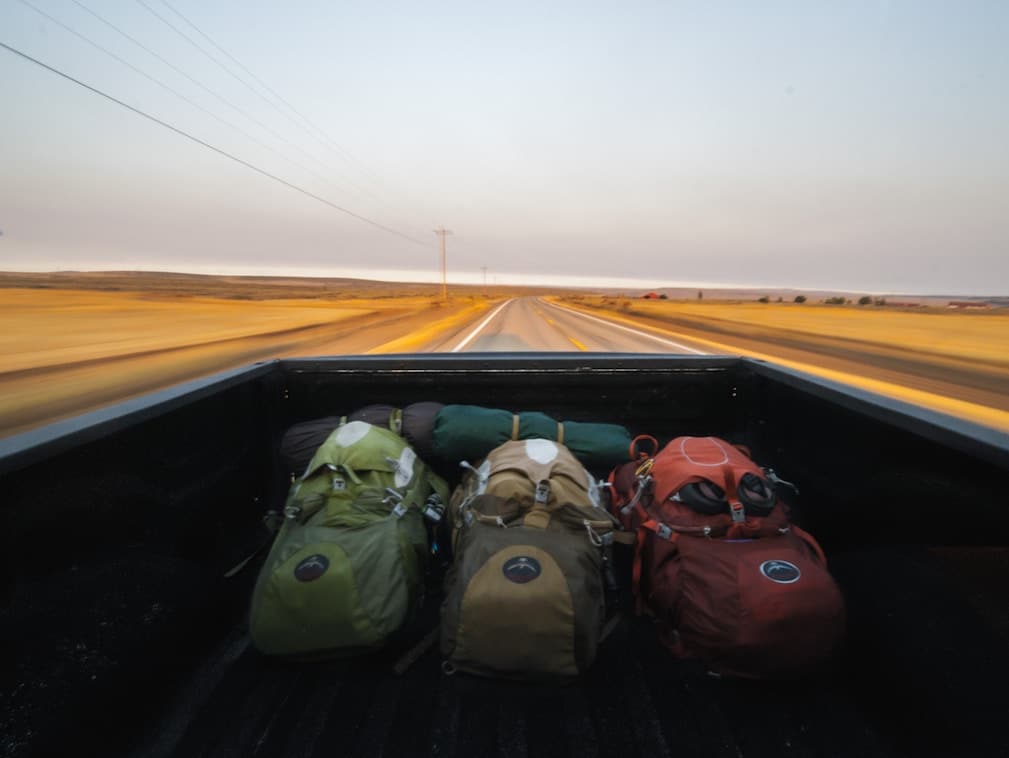When shopping for human-outdoor equipment, keeping up with the Joneses used to be the norm. New skis, boots, boards, kayaks, apparel, bikes, wetsuits and more. Whatever your sport or pursuit of choice, you had to have the latest technical outdoor gear, whether that be the freshest technology, the most wicked new design, or equipment that’s sleek and half the weight of last year’s model.

Photo © by Lukas Robertson. | Used with permission – sourced from Unsplash.
But that was then, and this is now. And good luck discovering what’s the norm in today’s adventure sports world. Stroll into your favorite outdoor store, surfshop, bicycle store or paddleboard purveyor and your head will spin at the options available to outdoor recreation enthusiasts today.
And while the manufacturing side of the outdoor industry might try to sell us on the notion of a new norm, the participants themselves hold the upper hand. That’s because this is the best time to be an outdoor recreation enthusiast. The offerings are endless and the manufacturers in the field are treating us to new equipment that was unimaginable just a few years ago.
With such a large selection of new designs and style, it’s a buyer’s market. You can pick and choose from among dozens of options for nearly every human-powered outdoor recreation activity. Big on water sports? Head down to your favorite paddling put-in on a busy day and check out the new stuff. You’ll see playboats, longboats, sea kayaks, paddleboards, sit on tops — all available in a variety of price points, with new innovations that will make you dizzy.
If your taste tends toward mountain biking, a trip to your favorite bicycle retailer will be illuminating. There you’ll find improved new versions of fatbikes, gravel grinders, touring bikes, 700c, 29ers, 650b’s. and 27.5’s. Heck, there are even packrafts with bikes strapped to them!
When it comes to surfboards and paddleboards, many of the designs are futuristic and all are now on the cutting edge of functionality. There are new fish shapes, longboards, mini simmons, eggs and even some non-symmetric boards out there, all designed to carve up the concave face of a wave.
So, with all these new outdoor recreation tools and toys, the big task is for you to find the gear that best meets your needs. Here are some tips to help you wade through that long list of potential products in order to come up with the perfect fit for you:
- Sign up for some classes, then listen to what the instructors have to say about the current status — and the future — of the equipment and gear in your favorite activity.
- Rent the gear you’re coveting and give it a test run without obligation. Most outdoor recreation retailers, including REI, offer rental programs for a lot of the gear they sell.
- Purchasing new equipment may not always be the best idea. There is so much “casually used” gear out there that will serve you just as well, leaving you with cash for, um, more gear. Not sure where to start? Visit GearTrade.com.
- Don’t get caught up in the culture of one particular outdoor shop or club — no matter how enticing it might appear.
- Don’t always believe the hype. Look beyond the marketing.
- Don’t haphazardly buy up gear, only to end up with a stable of broken dreams.
- Finally, do your homework. The Internet is the perfect place to find variations in the sports equipment you’re exploring. That’s why man invented Google, Backpacker.com, and Outside.com.
So, what is the new norm when it comes to outdoor adventure? It’s whatever makes you happy and functional when you go out to explore and play.
And if getting outdoors for an extended period of time is of interest to you, check out the course offerings available through The National Center for Outdoor & Adventure Education (NCOAE). We will get you where you want to go and beyond. Let’s play and learn together!
– – – – – – – – – – – – – – –
About the Author: Stephen Mullaney is the staff development director at The National Center for Outdoor & Adventure Education (NCOAE) in Wilmington, N.C., where he is responsible for the training and education of NCOAE’s field instructors. He is a member of the North Carolina Association of Educators (NCAE) and has taught within the Durham, N.C., public school system. Stephen received his undergraduate degree in English from Framingham State University, and his Master’s Degree in Education from North Carolina Central University.
TALK TO US
Have any further questions about our courses, what you’ll learn, or what else to expect? Contact us, we’re here to help!
Leave a comment